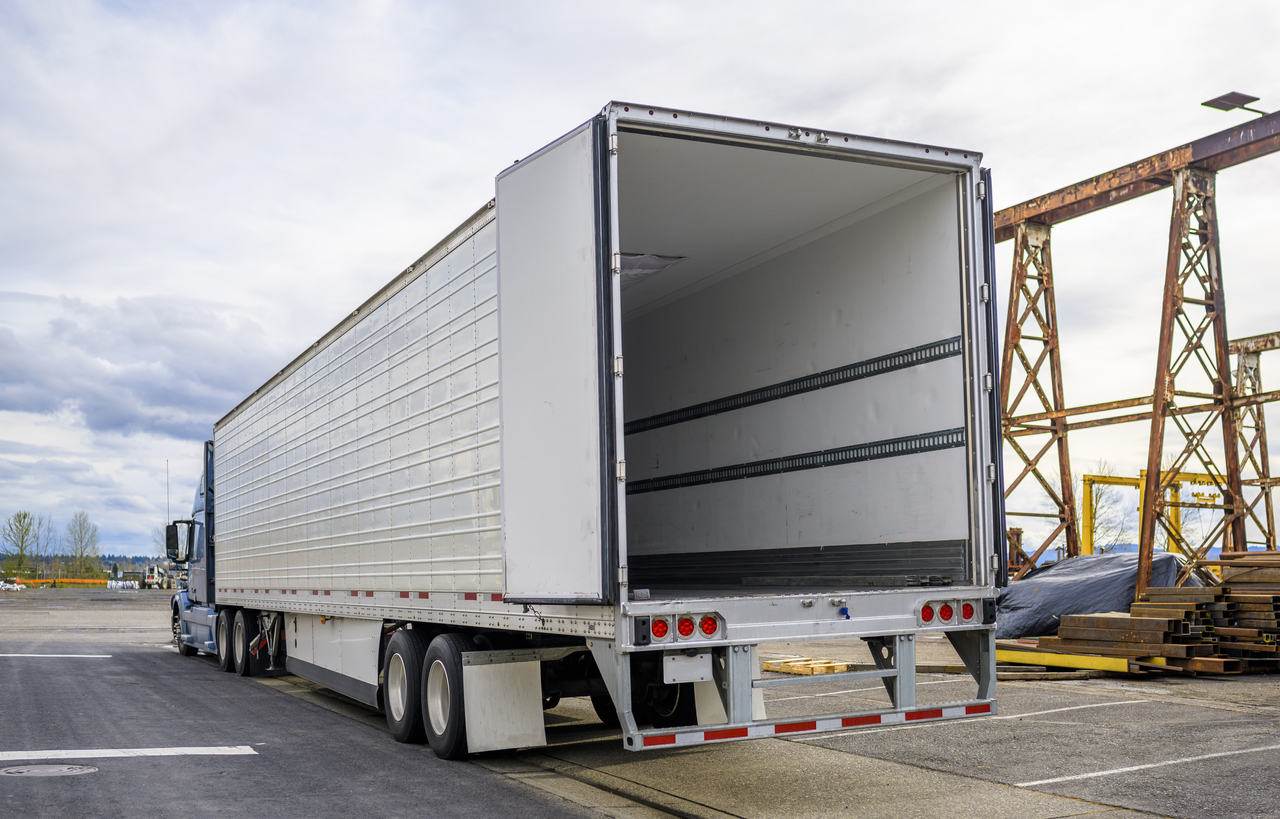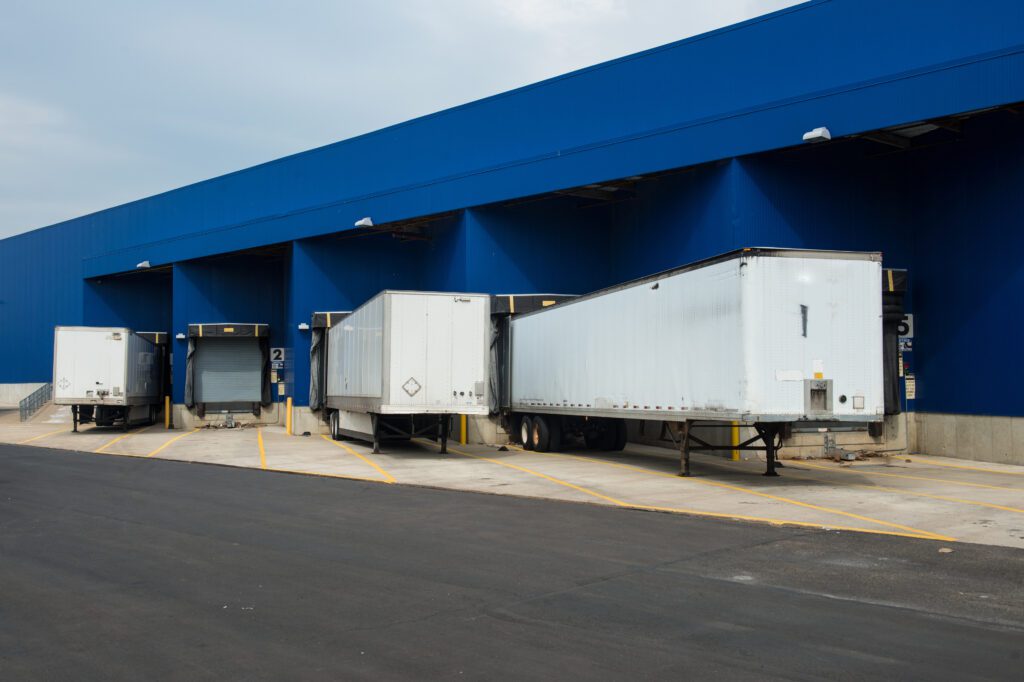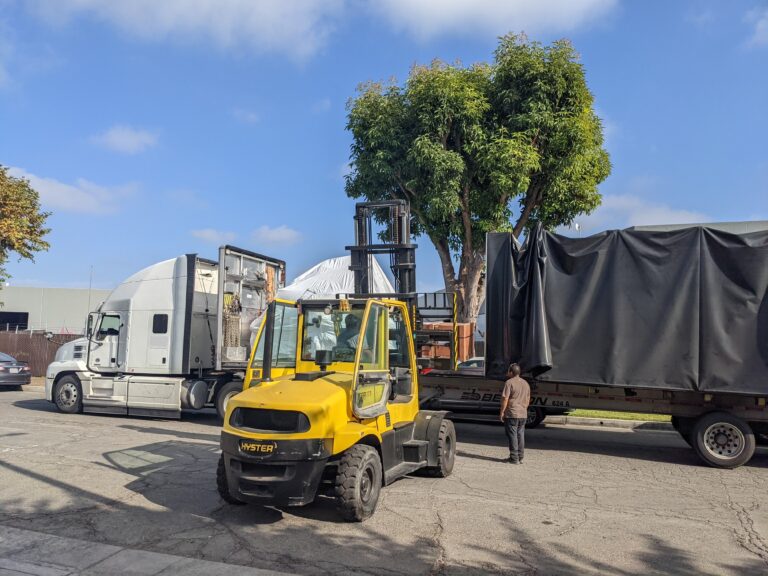Hauling Dry Van Freight: Key Pros, Cons & Insider Tips New Truck Drivers Need to Know Now
So, you finally landed your CDL after a lot of studying and driving practice with your instructor. Congratulations! You may now be wondering what type of trucking jobs are out there for you.
What is a Dry Van?
A dry van trailer is a large box like trailer that does not have temperature control and usually has two swinging doors in the back to gain access for loading and unloading the freight. These typically dock at warehouses with specialized bays called dock doors that are designed to connect to the rear of a dry van trailer.
The Most Common Trailer
Dry vans are the typical trailer most people think about when envisioning a truck driver cruising down the highway. Dry van trailers are usually 53-feet long but there are shorter versions which city drivers use that come in at 48-feet. There are even shorter ones called pup trailers that range from 26-32 feet long. These smaller trailers help city drivers dock the truck and trailer into tighter areas as well as navigate smaller streets in commercial areas and neighborhoods where a longer trailer may have a tough time getting in and out.
 Hauling Dry Van is Less Work
Hauling Dry Van is Less Work
The pros of a dry van trailer are they provide a large, covered area to protect freight from the weather. They also have walls that are strong enough to prevent lite freight from falling off of the trailer while traveling. The trailers usually do not require much extra work from the driver other than docking, dropping off or hooking up to a new one.
Watch Out for Touch Freight
If you are running a pickup and delivery route however that is a whole other story. Some dry van positions will have you unloading the freight at the customer by using a pallet jack or worse by hand for each box.
More Driving with Less Pay
Expect to drive more miles. Generally speaking, dry van drivers will drive more miles than some other types of freight because there is little involved with the job other that hooking up and dropping off. This usually leads to more time for them to drive. Expect to make a little less. Dry van freight is the most common, so a lot of carriers specialize in it or at the very least have a fleet of dry vans on top of their other types of trailers. It is simply too important of a freight market to ignore. Because of this there is increased competition and spot rates for dry van are lower than other types of freight such as flatbed, tanker and refrigerated.
Sweeping Out Your Trailer
Another downside for being a dry van driver is having a janitorial roll of sweeping out your trailer on a regular basis. You will find a lot of shippers require a spic and span trailer and any debris located on your trailer floor including dirt or dust can have you called out of the truck to sweep it. This is not like sweeping a small kitchen floor. These trailers are large. We are talking 433 square feet for a 53-foot trailer. A large floor broom is recommended, and this is what I used. You will get a little dusty as well as a decent work out each time you sweep out your trailer. Some drivers opt for a cordless leaf blower. I have not used one of these before, but I am told they make the job a lot easier.
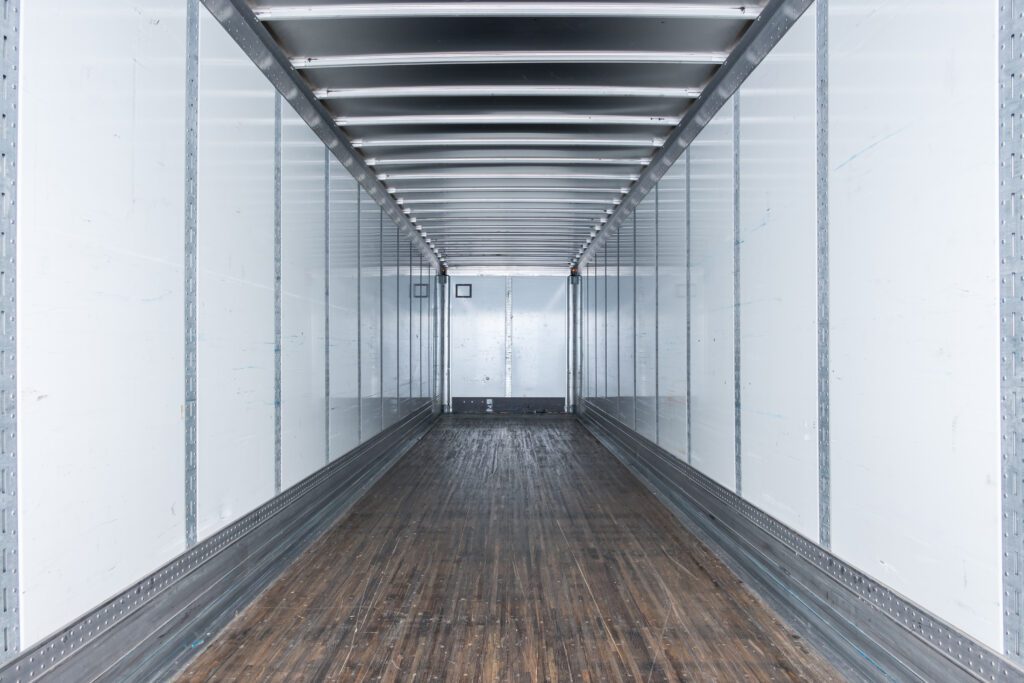
Dry Van Tandems
Most Dry van trailers have a set of sliding tandems to help the truck remain at legal weight on the trailer and drive axles. Each state is different, but you cannot have your trailer or drive axles over 34K pounds in most instances. So, if a load is overweight on an axle the driver is able to slide the wheels back and forth on the trailer to help distribute the weight more equally across both axles.
Connecting to a Dry Van Trailer
When connecting to a dry van trailer it is important to have your fifth wheel aligned properly with the trailer and have the bottom part of the fifth wheel lower than the dry van trailer. You do not want your fifth wheel too low, or you could do what is called a high hook. Once connected a driver will perform a tug test to ensure the locking jaws are secured. Also, it is highly recommended to get out of the truck and get a visual on the locking jaws with the landing gear still down and see that the jaws are fully extended around the kingpin on the trailer. This is the only way to be sure that you will not drop the trailer. Being lazy does not pay in trucking especially when it comes to inspecting your equipment and making sure it is always up to specs.
Trailer Seals
You will spend a lot of time as a dry van driver dealing with trailer seals. It is your responsibility to make sure the seal matches the number on the BOL. But usually, the guard at the shack will verify this for you anyways before you drive out of the shipping facility. There are multiple types of trailer seals. The most common being a zip tie and the other being a bolt type seal for more valuable loads. The bolt seals can require quite a bit of strength to break and a lot of times the gate guard at the receiving warehouse will want you to use a heavy pair of bolt cutters and do the job yourself.
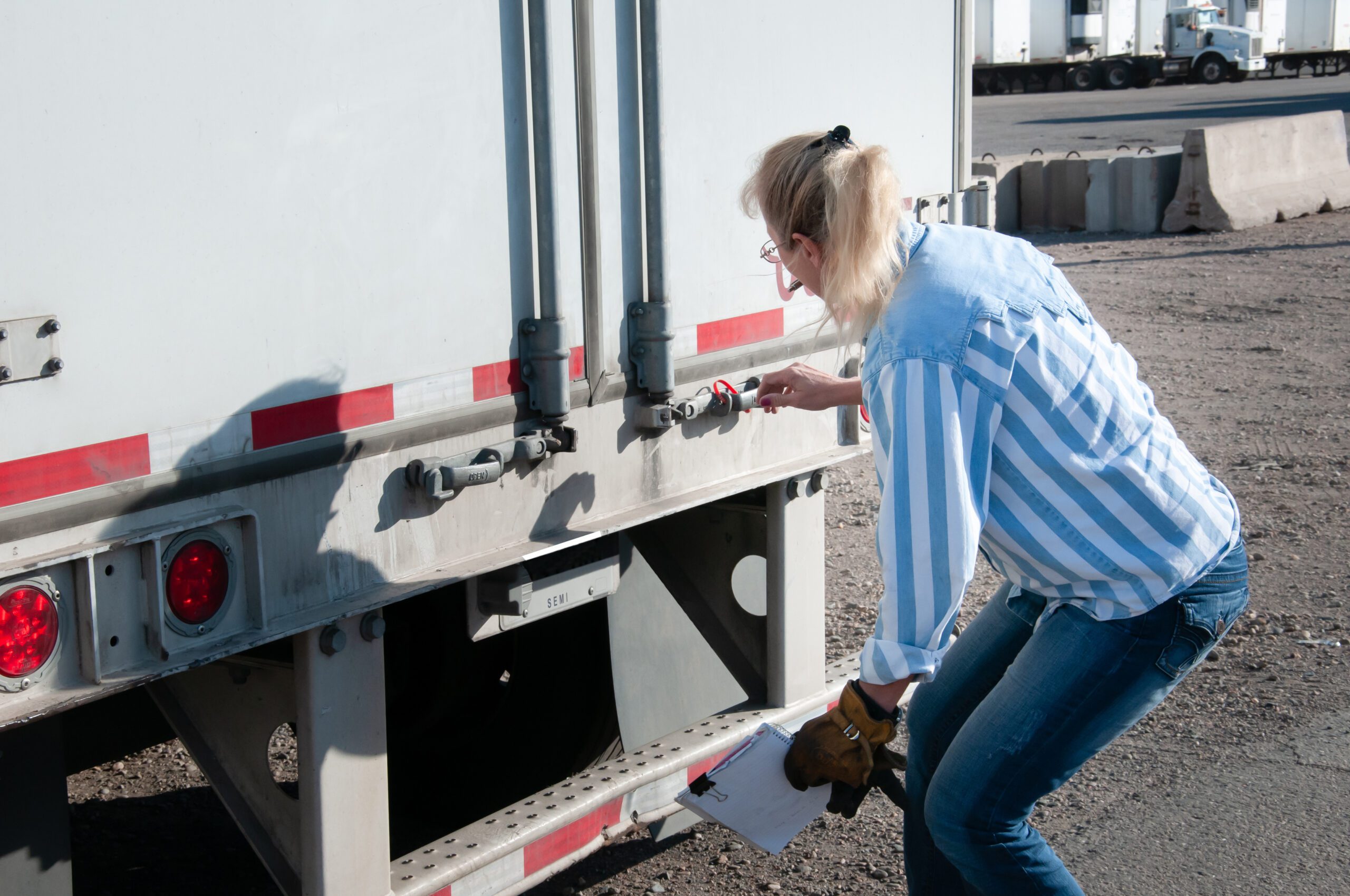
Trailer Height
Dry van trailers are tall. 13.6 feet from the ground. There are other types of trailers lower than this such as Flatbed and tankers. When driving around the country you are going to want to make sure you are on roads approved for trucks. This usually means the clearance will be at least 13.6 feet along the route so you will not hit an overpass. It is especially important to do proper trip planning so you can avoid such scenarios. But if you do come across an overpass that you are not sure your truck or trailer will fit under it is best to stop and put on your emergency flashers instead of causing irreversible damage to your truck and trailer.
Waiting to Be Loaded or Unloaded
A disadvantage to hauling dry van freight is having to wait around. You will be doing a lot of waiting to be loaded and unloaded at warehouses and regrettably this is just part of trucking. Most drivers make nothing while waiting around in a facility while they are hooking up and dropping off trailers. This is because the average driver gets paid by the mile. So, until you are out of that place you are sitting around for free. They wonder why truck drivers are always in a rush to get to where they are going. Sometimes it is because they just wasted 3 or 4 hours at a warehouse waiting to be loaded and now, have less legal hours to drive to try and make up for their lost pay.
Hauling Dry Van Summary
If you are a person who got into trucking because you just want to hook and unhook trailers and drive, then dry van is the way to go. In most van positions this is exactly what you will be doing the majority of the time and that is driving. The downside is you will also be doing lot of waiting around for your trailer to be loaded and unloaded and not getting paid for that time unless your company pays you by the hour.

